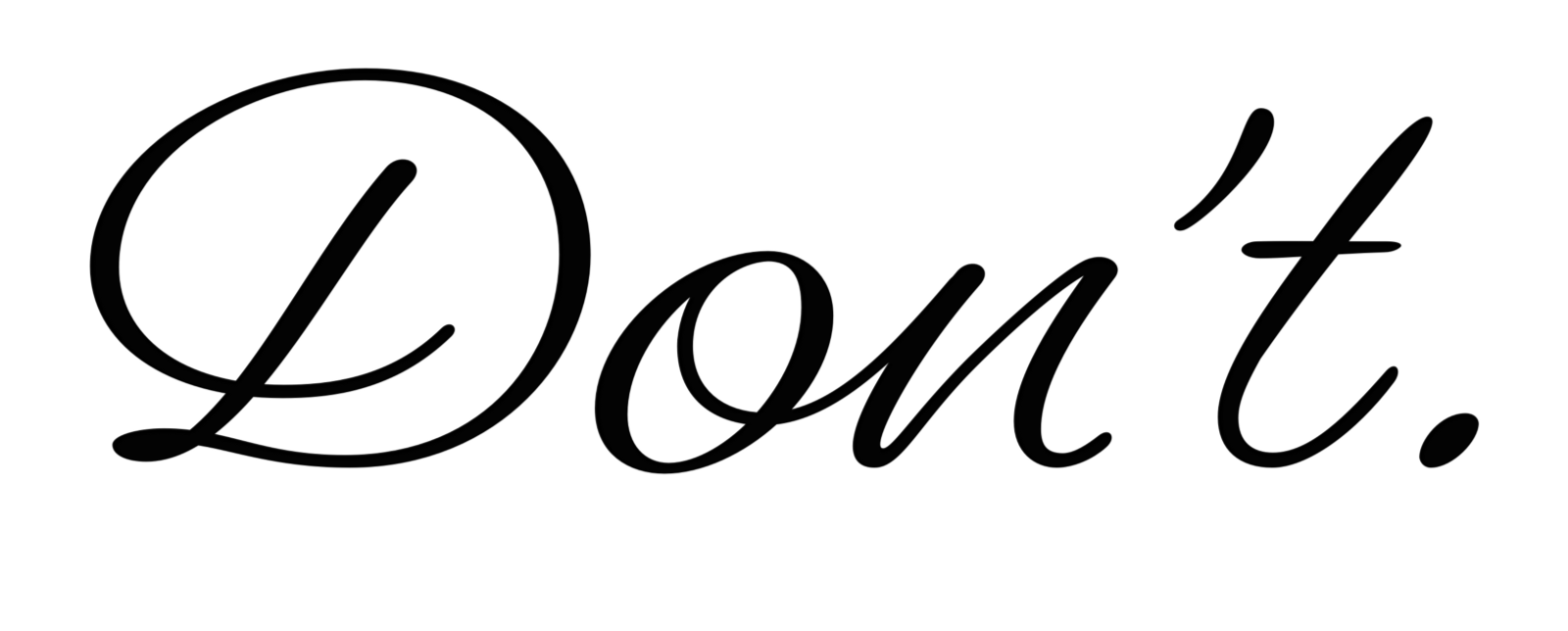Here’s the deal with describing type or lettering as feminine or masculine:

This is my simple request. If you already have an inkling about why this might be an issue and think it’s a reasonable request you can handle, awesome, no homework for you today. But if not, take my hand.
So, “feminine” can be taken to mean “stereotypical of women” and “masculine,” “stereotypical of men,” agreed? These ideas, go figure, are utterly expansive and varied within and across cultures. But there are some themes. Words commonly associated with femininity include emotional, submissive, quiet, graceful, passive, weak, sensitive, nurturing and soft. Words commonly associated with masculinity are aggressive, tough, loud, independent, strong, clumsy, self-confident, experienced, and competitive.
This is pretty uncool for two reasons. The first is that they’re presented to us as opposites, which enforces the restrictive and false idea that a gender binary exists. The second is that the majority of the adjectives we associate with femininity paint their subject as ineffective or frail, and the majority of the adjectives we associate with masculinity are powerful and favorable. Society has a nasty habit of using “feminine” as a pejorative and touting “masculine” as a compliment. Using the word “feminine” while it connotes powerlessness or using “masculine” while it connotes importance contributes to bias against women, and sets up arbitrary standards that people of every gender should not have to feel pressured to conform to.
Stereotypes are a poor choice for describing letters. At best they’re vague and careless, and at worst they’re perpetuating harmful, false ideas about how different genders have innately different capabilities. (Yes, I know, people tend to casually gender lots of objects. That doesn’t make it okay.)
And surprise: as far as I can tell, “feminine” and “masculine” don’t actually seem to mean anything when we’re talking about fonts. For example, fonts tagged “feminine” on MyFonts are just a weird grab bag. Seriously, I don’t even wanna bother describing the variety. If “feminine” means scripts and sans and serifs with no discernible similarities, does it mean anything at all? No. Something you hear a lot is that “curvy” type is supposedly feminine. Putting aside the fact that it can be manly to have curves too, hi have you ever seen type? It’s. Literally. Almost. All. Curves. Something else you hear a lot is “make this more bold less feminine” or “this is feminine but strong.” Think about what this says we think of femininity, about how we consider it less valuable.
There is no type that is objectively feminine or objectively masculine. Give it up, already.
Turns out there are a lot of other words you can use! You can say it’s loopy, whimsical, sturdy, ornamental, angular, snappy, jumpy, impenetrable, flowing, uptight, sniveling, hungover, rapturous. This just in: words are fun. Instead of “girly,” think of what you really mean, and instead say, “has lots of swashes.” Instead of “masculine,” try calling it “heavy” or “literally looks like rocks.” Get to the point, instead of using loaded words with irrelevant connotations.
It’s not enough to call a font feminine and then say, “I meant it as a compliment!” Maybe you did, sure, but words come with backstories and contemporary contexts. You don’t get to use a stereotype and then decide you only meant the good stuff, it doesn’t work that way. And it doesn’t matter if you think it’s “just efficient shorthand,” or “a broad term that can be useful in some contexts.” Gendering things that are genderless does harm by keeping ideas around that hold everyone to stupid, rigid standards. Altering your habits just a little bit is a minuscule price to pay to make the world all the more understanding and inclusive. You can do it.
One of the things they tell me is really cool about making type is seeing it used successfully in ways you wouldn’t have expected. Maybe you made a “no-bullshit” text face that it turns out works great for a book of poetry. Maybe you made a brushy script that got turned into… quinoa… with Kid Rock. Maybe you made a revival of something that graphic designers over the years have scoffed at, but that people are now using in interesting contemporary work that wouldn’t have been possible without your stubborn love and dedication. In the hands of a skilled designer, good type can do such exciting things. Why bother limiting people’s perceptions of a typeface’s utility by slapping a stereotypical label onto it?
Whether we notice it or not, the words we use mold us, and we desperately need to continue to remold the way society regards femininity. And we can’t get there without stopping to reevaluate some of the things we’re casually saying. I don’t know about you, but I got into type design because I know that words matter. Let’s shape what happens next by choosing them thoughtfully.
